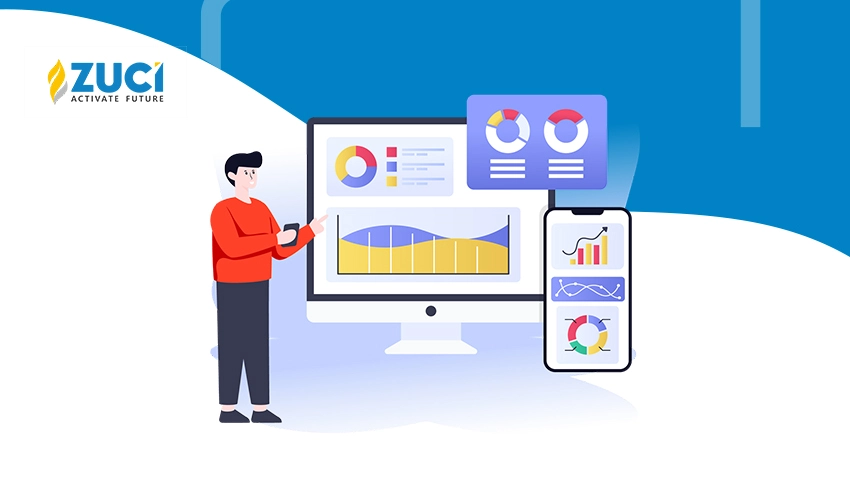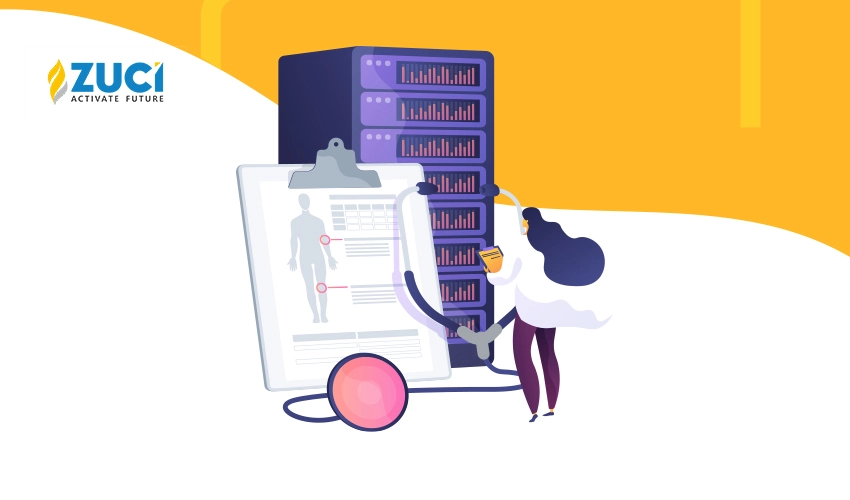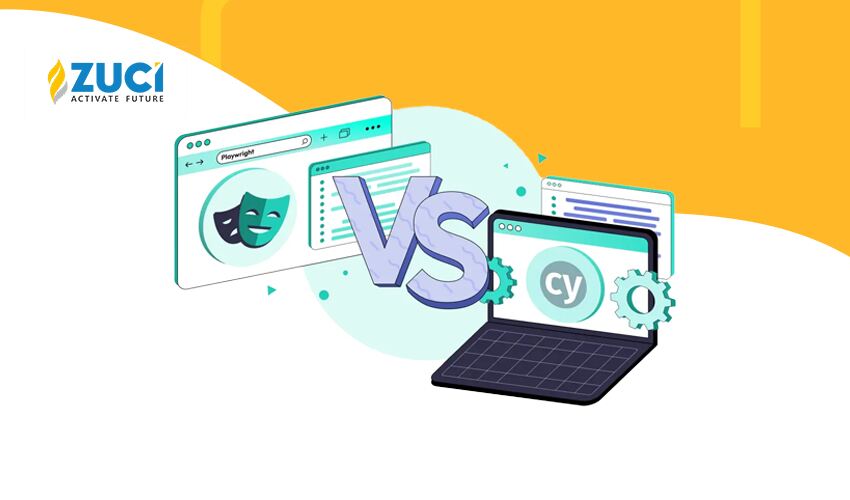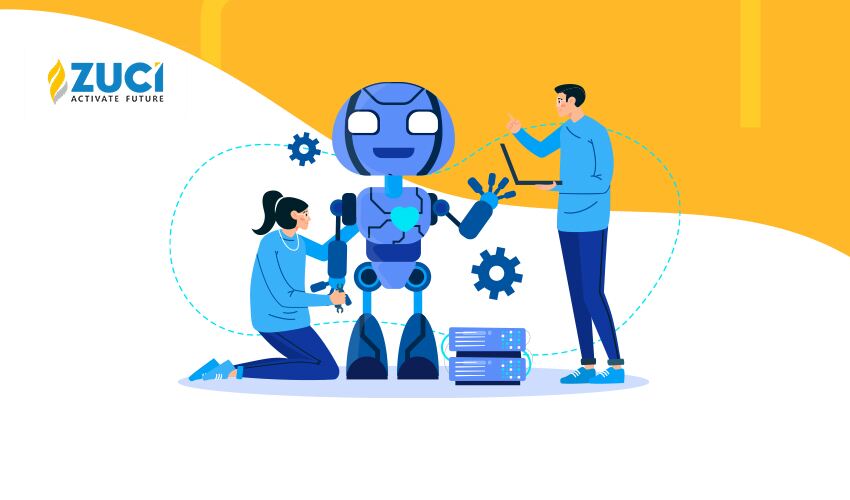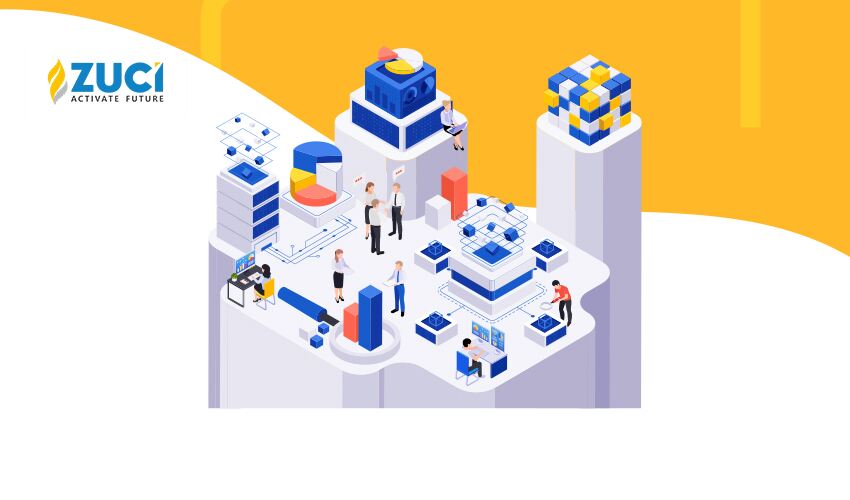Reading Time : 1 Mins
What Does MLOps Mean? A Blog Defining Machine Learning Operations
I write about fintech, data, and everything around it
Machine Learning (ML) is one of the hottest and most discussed topics in the Big Data space. But what is MLOps? What are the benefits of MLOps? And how to get started with it? In this post, we will present some use cases that might help you decide whether MLOps is a good fit for your problem or not.
Machine learning holds immeasurable potential. With Machine Learning, businesses and individuals can deploy solutions that improve revenue, create efficient workflows, save time, enhance customer experience and reduce overall costs. However, this is impossible without a solid framework in place.
And this is when MLOps comes into the picture. MLOps helps automate the development and deployment of the ML model. As a result, you can reach the market quickly and more frequently with lower operational costs. But what is MLOps, and how is it different from DevOps?
The answer to the above question lies below in this blog. Here we’ll discuss what MLOps is and how it’s useful in the Machine Learning world. We’ll also discuss how it’s different from DevOps.
What is MLOps?
MLOps is made up of two acronyms, ML and Ops. ML stands for Machine Learning, and Ops stands for operation. So, when combined, MLOps stands for Machine Learning Operations.
Machine Learning Operations or MLOps is a unique set of rules or practices that allow operations professionals and data scientists to communicate and collaborate swiftly.
By applying these practices, you can improve the quality, simplify management and automate the deployment of deep learning and machine learning models. With MLOps in place, you can align the ML/DL models with business needs and other regulatory requirements.
MLOps is everything you need to create, run, deploy, train and retrain AI models. MLOps has three main components:
- DevOps (IT)
- Machine Learning
- Data Engineering
Watch this video from our Senior Digital Manager, Saifudeen Khan, to understand what is MLOps and why it should be adopted for machine learning systems. Listen to the video and let us know your views or questions in the video comments section.
How is MLOps different from DevOps?
Fundamentally, MLOps is quite similar to DevOps. After all, MLOps were actually derived from DevOps. However, when it comes to execution, both these practices change paths. Let’s learn how:
1. More Experimental
MLOps is way more experimental in nature than DevOps. The Deep Learning/Machine Learning engineers and Data Scientists can tweak several factors such as:
- Parameters
- Hyperparameters
- Models
And during this time, engineers have to keep track of and manage the codebase and data for reproducible results.
2. Testing
DevOps include unit testing and integration testing. MLOps includes model training and model validation, along with integration and unit testing.
3. Team Composition
In the case of DevOps, there are only software engineers. However, this is not the case with MLOps. Teams in ML projects include developers, data scientists, and data researchers, etc. The ML researchers and data scientists focus on data analysis, model (Data Modeling) development, and experimentation.
4. Deployment
Manually adding features and uploading the same is easy in the case of conventional software programs.
However, it’s quite complex in the case of Machine Learning. You cannot just deploy an ML model that has been trained offline. In this case, you need to create a pipeline that retrains the model and deploys the same automatically.
This is complex as you need to automate all the steps to retrain and validate models that would have been done manually by the data scientists.
5. Monitoring
Monitoring isn’t too crucial in the case of conventional software.
However, you need to monitor all the ML models in production. Along with the ML models, you also need to monitor the data statistics used to build the model. It’s because the statistics will change over time.
Notification should also be set up. This notification will allow you to roll back changes if something unexpected happens.
These were some major differences between DevOps and MLOps. Let’s now move towards the core practices of MLOps.
What are the Benefits of MLOps?
There are many benefits to adopting a machine learning approach to running your business. Here are some of the top benefits of MLOps:
1. Rapid Innovation
MLOps makes collaborating easy for everyone, including:
- Analysis Professionals
- IT Engineers
- Data Processing Teams Including Data Scientists and ML Engineers
This way, there won’t be any communication gap. Also, a business can develop and deploy more Machine Learning models quickly with the help of:
- Monitoring
- Validation
- Management Systems for Machine Learning
2. Reproducible Models and Workflows
Reproducibility of workflows and models is necessary for Machine Learning. And MLOps helps achieve this. Using reproducible models and workflows, you can reduce variations in model iteration. Also, you can use advanced model registries along with dataset registries to track resources.
What’s more, you can ensure consistent model delivery by creating ML pipelines for designing, deploying, and administering model workflows.
3. Deployment of High Precision Models
MLOps allows you to deploy high-precision models more efficiently and quickly. For example, you can use automatic scaling and pack models quickly. Also, you can ensure high quality at all the steps using model validation and profiling.
Furthermore, you can migrate the ML models to the production environment using managed deployment.
4. Better Management of the ML Life Cycle
With its built-in integrations with GitHub and Azure DevOps, you can easily automate and manage the ML workflows. For example, you can use CI/CD to simplify the retraining process and integrate ML into the existing processes. This way, you can enhance the performance of your model over time.
5. Easy Resource Management
MLOps makes resource management easy. You can set quotas for resources and ensure compliance with privacy, security, and other standards by enforcing policies. As you can mark ML resources and track experiments automatically, you can easily meet the regulatory environment using audit trails.
Furthermore, you can enable auditing by keeping track of model origin and version history.
What are the Best Core Practices of MLOps?
It’s not a question that has a simple answer. There are many different technologies, methods, and algorithms to choose from. Here are some of the core best practices of MLOps:
1. Machine Learning Pipelines
Data Pipeline is a crucial concept of data engineering. A data pipeline has all the transformations that are applied to the data from its source to the destination.
Most of the time, graphical representation of data pipelines is used wherein:
- Each node represents transformation.
- And edges represent the execution order or dependencies.
2. Hybrid Teams
Hybrid teams with the required skills are necessary for successful ML model development and deployment. Every team should at least consist of an ML Engineer or a Data Scientist, a DevOps Engineer, and a Data Engineer. It’s because a Data Scientist on his own cannot make the most of MLOps.
3. Model Versioning
A version code is all you need in traditional software development. However, in ML, along with the version code, you also need to track:
- The Model Versions
- Data Used for Training the Models
- Along with Metal Information Such as Hyper Parameters
4. Model Validation
ML models are way harder to test than the DevOps ones when it comes to testing. It’s because, in ML, no model gives accurate results. It simply means the validation results should be statistical in nature instead of being binary(pass or fail).
5. Data Validation
Validating the input data is crucial in ML models. Along with the basic level validations, you must ensure higher level validation of statistical input properties. It’s because if the data in the input phase varies, it can impact the trained model along with its predictions.
6. Monitoring
Yet another best practice of MLOps is monitoring. Along with monitoring the latency, saturation, error, and traffic, you should also focus on the model’s prediction performance. It’s because ML systems are vast and basic monitoring isn’t good enough to ensure success.
Wrapping Up
By now, you must have understood what MLOPs is and how it’s useful for businesses. MLOps is kind of a fuel that you need to power your ML vehicle. So, make sure to follow the MLOps best practices to enjoy the benefits.
However, you can reach out to Zuci Systems if you need assistance. We are a reliable organization that helps businesses with projects involving Data Science, Digital Engineering, Business Intelligence, and Software Testing.
Check out the below video, where our client, Padmanaban T A, Head of Digital Banking at City Union Bank, explains how Zuci Systems helped reduce the dependency on manual underwriting of gold loans and implemented a scientific approach to improve risk assessment accuracy with deeper insights for their existing and new potential borrowers.
Schedule a 30-minute call with our data engineers to identify and fix your data problems and become a data-driven organization. Sign-up and get your customized roadmap for Free.
Related Posts



